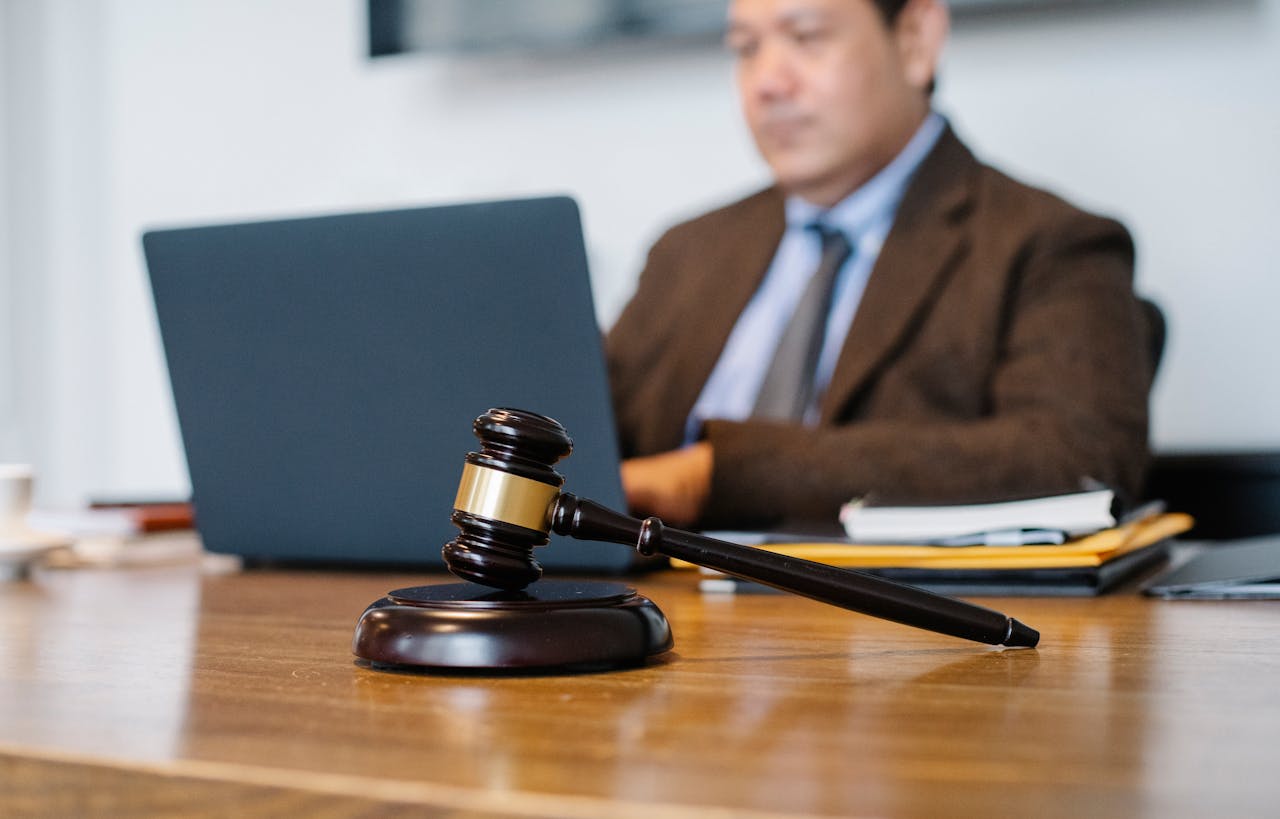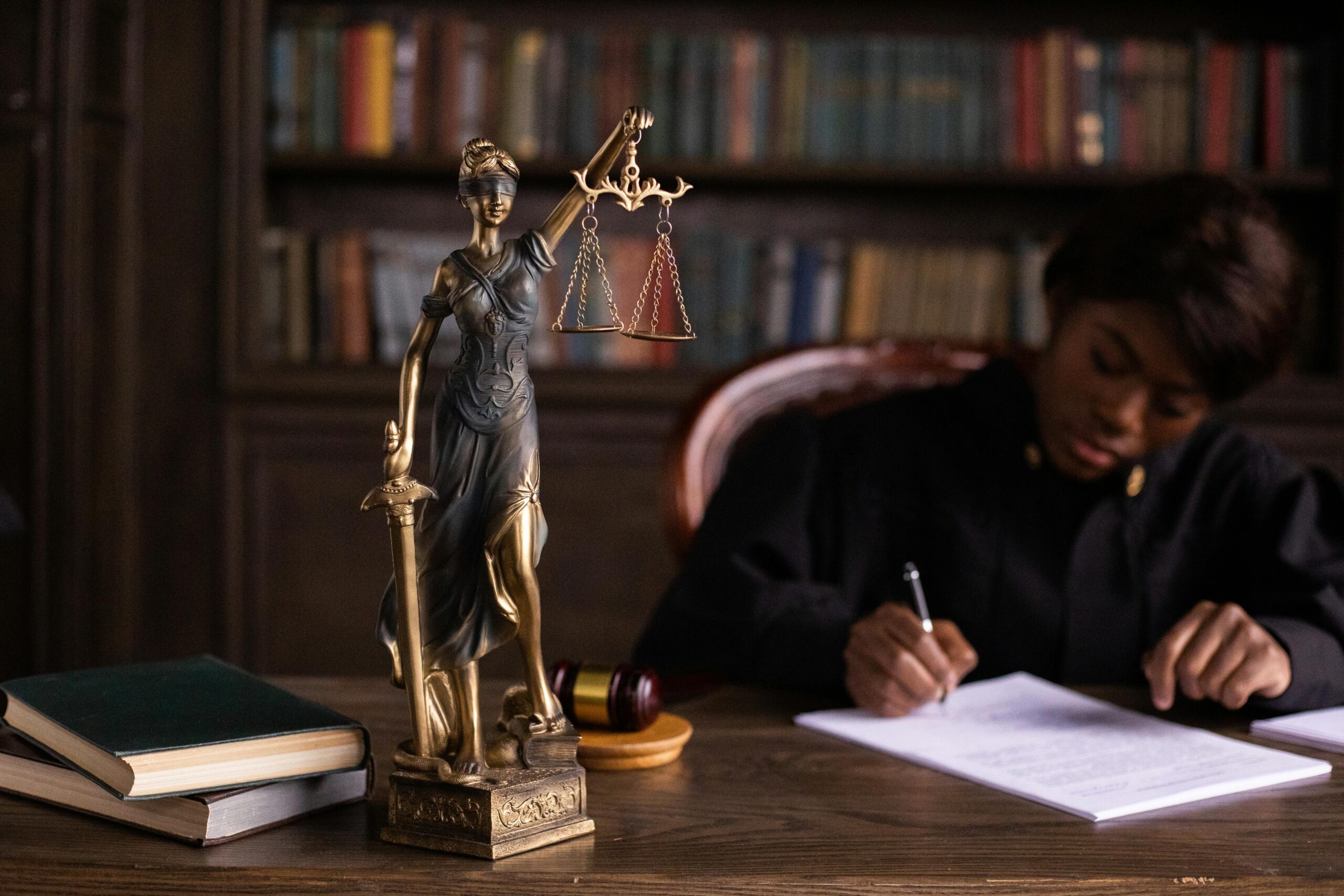Published On: 13th November, 2024
Authored By: Nitish Gaur
MAHARISHI DAYANAND UNIVERSITY – CPAS, GURUGRAM
ABSTRACT:
Forensic evidence plays a fundamental role in India’s criminal justice system. It is an advanced tool to determine justice and equity in the matter of criminal cases. Forensic evidence can provide an objective and scientific basis for determining the guilt or innocence of an accused. Additionally, forensic evidence is instrumental in determining the facts of a case and identifying criminals.
The process of criminal trials in India involves the importance and the purpose of forensic evidence. Thus, this article discusses issues on forensic evidence and its objectives of bringing out the significance of forensic evidence in the investigative processes and the administration of justice.
This paper starts with a broad discussion of forensic science and its development in the Indian scenario, then narrates various categories of forensic evidence, which include digital, biological, physical, and trace evidence. It will further discuss how forensic evidence works in criminal investigations all over India with discussions on application and efficacy in meeting justice.
INTRODUCTION:
Forensic evidence is obtained from a crime scene, victims, suspects, and witnesses. Indeed the vast areas of disciplines covered under forensic science range from digital forensics to toxicology, ballistic, DNA analysis, and fingerprint examination. The gathering and analysis of forensic evidence involves one who can be deemed as an expert and possesses skills and knowledge in forensics, this work of skill is often left in the hands of the forensic experts and laboratories.
It has increased manifolds over the past several years. Warranted by the increasing numbers of forensic labs dotting the entire length and breadth of this vast country as well as increasing awareness about the importance of scientific evidence in criminal cases. The Central Forensic Science Laboratory (CFSL) is country’s first and foremost forensic lab, and its regional centers are spread all over the country.
A broad spectrum of laws holds the Indian Forensic Evidence together. Forensic science is slowly starting to gain recognition, boosted by sensational cases and public interest, the rise of forensics came with several hurdles such as inadequate numbers of specialist personnel, constraints in infrastructure, and the court system is still getting used to the concept of scientific evidence.
The development of forensic science in India has been quite intricate and fascinating by closely paralleling the dynamic judicial landscape of the country with its growth pattern. Historical references in Indian epics indicate a long-standing intersection between medical knowledge and criminal investigations, tracing back to ancient times. However, it was during the late 19th century that forensic science of modern days began to expand.
BACKGROUND OF FORENSICS IN INDIA:
The journey of Forensic science in India began in ancient times when the country had well well-defined process of investigation but it took a more formal approach only during the 19th and early 20th centuries. Here is a highlight of its advancement:
- Ancient and Medieval Periods:
Investigations into the occurrence of crimes in the ancient Indian culture are mentioned in ancient Indian sutras such as the “Arthashastra” in which Kautilya (Chanakya) details the changing ways of criminal investigation and identifying the crime events during the Mauryan Empire. Also during the Mughal empire Emperor Akbar established a department called “Dewani-i-Ala” especially to investigate criminal matters.
Medical Forensics: Ayurvedic texts also contain several impotent figures depicting the procedures of ‘Shav Prasad’ or ‘post mortem’ and the cause of death as well. Likewise, in the ancient legal text called “Manusmiriti,” there are ways described for verifying the identity of suspects and the authenticity of contracts through physical evidence.
- Colonial Era (19th Century):
The British rule in India brought about the advent of modern developments in criminal investigations. The formation of police and courts created a demand for a scientific approach to crime solving. The British Police Officer Sir Edward Richard Henry instituted the Identification method in India known as Fingerprintthe.
Formation of Institutions: The first forensic laboratory was established in Calcutta with stress on toxicology and forensic analysis.
- Post-Independence Developments (1947 Onwards):
It was only after independence that there was growth in the usage of forensic science in India. The first Central Forensic Science Laboratory (CFSL) was set up in 1952 in Calcutta and became fully operational in 1953 under the control of the Government of Bengal.
Establishment of More Laboratories: Coming to the late 20th century, many state forensic laboratories emerged strengthening the crime investigation scope.
- Modern Era (21st Century):
The introduction of DNA, and fingerprinting in the Indian forensic investigations beginning in the 1990s was a major leap in the field resulting in more realistic and precise crime investigations. The government of India has attempted to enhance the competence of forensics even more in areas of particular policies to boost training, research, and cross-functionality.
Integration into Jurisprudential Systems: With every passing day, a greater emphasis is placed on the importance of forensic evidence in Indian laws and its scope within court proceedings. It also stands as a multi-disciplinary and dynamic area that enhances scientific principles and cutting-edge technologies.
OBJECTIVE OF FORENSICS:
- An integrated perspective of the principles of Criminalistics and Forensic Science that incorporates their concepts, methods, and importance in the larger scheme of the criminal justice system.
- To present how gathering forensic evidence is critical in crime-solving purposes and determining whether the accused is guilty or not, and provides a high-quality result to the law process.
- To Identify and discuss the different statutory provisions underlining criminal investigations with special emphasis on the statutory frameworks and regulations governing the collection and use of forensic evidence.
- To investigate the limitations and challenges associated with the use of forensic evidence in the Indian legal context, addressing issues such as accessibility, standardization, and the need for specialized training among practitioners.
Regulatory framework on the use of forensic evidence in India:
Forensic evidence has an extremely vital role in deciding the direction of the investigation of justice and dispensation in Indian courts. These are regulated in terms of admissibility and use by an array of enactments declaring procedures governing the collection, preservation, admission, and production of forensic evidence before courts.
Code of Criminal Procedure (CrPC), 1973:
The Code of Criminal Procedure or CrPC, 1972 essentially is the principal enactment that details and forms the framework on which criminal investigation as well as criminal trials are to be carried out in India. In so far as sections 53[1] and 54[2] go, these sections refer to the examination of the accused persons. According to Section 54, the court can mandate a medical forensic examination of the accused individual. This helps the police collect critical forensic samples for further evidence while analyzing bodily fluids or any other samples of the accused person.
Indian Evidence Act, 1872:
The Indian Evidence Act of 1872 deals with the principles governing the admission of both judicial and expert evidence. The Act establishes that expert opinions, like forensic experts in this instance, form an essential domain of knowledge. Forensic evidence is validated under Section 45[3] since experts can be permitted to offer opinion evidence on matters such as DNA profiling, fingerprint analysis, or handwriting examination. Lastly, Section 293[4] of the CrPC has made legal provisions for the acceptance of forensic reports in court, through which the opportunity can be generated, if they are prepared and submitted through proper legal processes.
Information Technology Act, 2000:
The Information Technology Act, of 2000, along with its subsequent amendments, addresses the admissibility and legal considerations surrounding digital evidence. In today’s digital age, this type of evidence is vital, especially in cases involving cybercrimes, data theft, and electronic transactions. The Act establishes a robust legal framework for the collection and use of digital evidence, ensuring its admissibility in court and facilitating its effective application in investigations and legal proceedings.
Significance of Forensic Evidence in Indian Criminal Courts:
Since all the states and other bodies follow the Indian Evidence Act, 1872 there is uniformity in criminal as well as civil proceeding. It may come to notice that the standards of the proof are different for both types of trials, but both rely upon the principle that is the same. The principle of “onus probandi”[5], especially within criminal law, has been institutionalized in the Indian legal system as each and every person accused shall be presumed to be innocent until proven guilty.
However, the application of the onus probandi principle has greatly restricted dependence on forensic evidence in criminal procedures. This restriction characterizes the harsh demand for a stronger incorporation of forensic science to ensure that the process of the courts is effective and sound and that the pursuit of justice is adequately serviced by scientific evidence.
Types of Forensic Evidence
The Indian criminal justice system utilizes a range of diversified forensic evidence types, each of which, on its own, possesses fundamental importance in the investigations and prosecution of crimes. Some of the kinds of Forensic Evidence are:
DNA Evidence:
This evidence pertains to the examination of genetic material to establish individual identity. The DNA evidence proves of immense value in linking suspects to crime scenes, identification of victims, as well as exonerating the wrongly accused. Additionally, this forensic evidence is the most definitive evidence among others.
Fingerprint Analysis:
This is the most reliable and one of the oldest forensic methods of identification. Fingerprint analysis involves an earnest scrutinizing of investigation patterns uniquely present at an individual’s fingertips. Fingerprint analysis can be relied upon to make firm connections relating to suspects and scenes of crime.
Ballistic Evidence:
This pertains to the examination of guns, bullets, and cartridge cases in regard to identifying their characteristics and the likelihood of their use as a crime tool. Ballistic evidence may tell one of a sort weapon that was used while otherwise tells one the projectile trajectory and may even help one link a suspect to the shooting case.
Digital Forensics:
In an era marked by the rise of cybercrime, digital forensics has become increasingly vital. This field focuses on the recovery, preservation, and analysis of data from digital devices such as computers, smartphones, and tablets. It is essential for investigating crimes involving hacking, data breaches, and online fraud. And more on similarly any other evidence digital or physical, data is stored and analyzed by law enforcement officers and if the data gets tampered with or lost it becomes inadmissible in court.
Toxicology:
This deals with the testing of body fluids like blood, urine, and saliva in association with drugs, alcohol, or toxins. It is also an essential tool in a case of poisoning overdose or drug/substance abuse case since such information is crucial in understanding the health and status of victims or suspects involved.
Autopsy:
After death, the examination of the body by “post mortem” is known as Autopsy. There are different kinds of autopsies named as ‘Coroner’s or Forensic autopsy’; ‘Academic autopsies’; ‘Medico-legal autopsy’; and ‘pathological autopsy’.
CASE LAWS:
State of Madhya Pradesh V. Sitaram Gajraj Rajput & Ors.[6]
Facts:
The respondents were convicted of criminal conspiracy and breach of trust by fabricating false muster rolls and making payments to nonexistent laborers. Some respondents were alleged to have paid thumb impressions against the laborer’s names where payments had been made. The Trial Court held that there was no proof beyond reasonable doubt that any of the respondents committed the offence as charged. The State Fingerprint Expert had only bothered to take enlargement for 12 thumb marks and ignored all the contested thumb impressions. Moreover, standard restrictions were violated while conducting the comparison of the disputed and the standard thumbprints. In the end to contrary the reasoning of the Fingerprint expert during cross-examination, the trial court acquitted the Respondents and dismissed the evidence.
Judgment:
The Madhya Pradesh High Court held that there are different criteria for determining the points of similarity between a disputed fingerprint and a specimen thumbprint. Apart from the world such standards as the FBI’s and Scotland Yard’s, it referred to the Fingerprints Manual of Madhya Pradesh. The Court said that “no hard and fast rule” can be laid out in fixing the number of points of similarities needed for comparison. Here, the Court stressed the requirement of zoomed images of the disputed and specimen fingerprints and also emphasized that it would be very difficult to scrutinize the prints using a magnifying glass. The Court also held that the Expert had failed to consider the basic orientation of the specimen print and the disputed print. In conclusion, the Court did not find any flaw in the reasoning of the Trial Court and maintained its decision.
Mukesh & Anr. V. State for NCT of Delhi & Ors.[7]
Facts:
The appellants were convicted and sentenced to death for the offence of gang rape and murder of the victim. One of the pieces of evidence, the prosecutors depended on was DNA evidence to prove the guilt of the appellants. While upholding the conviction and the death sentence, the Supreme Court detailed the importance of DNA evidence.
Judgment:
The Court observed that India is also amongst those countries where reliance on DNA evidence is increasing. It further stressed the need for such evidence in the legal proceedings by quoting two related provisions of the Criminal Procedure Code, 1973, namely Sections 53A and 164A[8], which pertain to the examination of the victim and accused in cases of rape and thereby conclude that DNA profiling is now a statutory requirement. The court referenced numerous precedents, stating that DNA reports should be accepted unless they are damaged or tampered with. A situation that warrants the rejection of a DNA report should be ensured that there were no efforts to induce any wrongful examination of the samples or the report. A report on DNA has to be accepted if there are no signs of tampering on the actual samples.
Virendra Khanna V. State Of Karnataka[9]
Facts:
The petitioner’s mobile phone was taken away while he was in custody for interrogation concerning an old criminal case. The petitioner was instructed to hand out his mobile phone and email account with passwords for the investigation which according to the Prosecution, he defied the court order, The Petitioner however, contended to have shared his passwords as per the direction made. Upon an application by the CCB, the Special Court ordered the polygraph examination of the Petitioner on the grounds of not providing the passwords. The Petitioner was not allowed to defend this application and he did not agree to take the Polygraph test and his application for recall was also not entertained. The Petitioner refuted that the polygraph examination was involuntary and self-incriminatory and that the passwords should not have been demanded unless willingly given and that it was a breach of his silence and right to privacy.
Judgment:
The Court held that it is unable to Suoto Moto’s [10] order requiring the accused to provide passwords and Biometrics for use in the investigation. A Court does not have such powers on its own and may act only on an application made by either party. The Court further said that evidence obtained from a cell phone or email account will not ipso facto[11] prove the guilt of the accused or serve as evidence without further confirmation in the trial. It is more than a simple specimen or signature under Section 311A[12] of CrPC. The Court also said that orders directing the stakeholders to provide passwords, and biometrics would not constitute forcing of argument and self-incrimination since such information is the evidence, which by law deserves proof by both parties in the Court. As for this Judgment, used data in the course of the investigation did not amount to an infringement of the right to privacy and would be classified under the exceptions to Justice K.S.Puttaswamy’s judgment.
CONCLUSION:
In conclusion, forensic science is transforming into one of the best techniques that can be utilized. Because it combines scientific principles and analytical techniques it deters from committing similar activities and provides a way for the victims of crimes to seek justice. Forensic specialists are important, be it when they are performing investigations or documenting evidence in a court of law. All of this pervasive macrostructure further states the positive role, that forensic science plays, in the legal system and the administration of justice.
In India, as a general specialty, some forensic certificates can be issued voluntarily, and thus, it once again reflects the misery of this particular professional field. Forensic investigators have two faces; the first one is to assist law enforcement in the practice of investigative processes and the second one is to position judges with lucid and dependable insights. That enables the judiciary to make wise choices in matters of a criminal nature or even in civil ones without a doubt.
As it is understood today, forensic science is now being improved, and its usage is extended to other domains within and without the justice system. It enables the threat to society to be neutralized and seeks the elimination of such social defects through means that involve both science as well as technology.
References:
- The Code Of Criminal Procedure (CrPC),1973
- Indian Evidence Act,1872
- Information Technology Act,2000
- https://www.project39a.com/forensics-landmark-judgments
- https://lyceum.co.za/criminal-justice/the-role-of-forensic-evidence-in-criminal-trials/
- https://www.ijcrt.org/
- https://hawkeyeforensic.com/2024/01/08/evolution-of-forensic-science-and-its-impact-on-the-indian-criminal-system/#:~:text=Exoneration%20of%20Innocent,forensic%20evidence%20in%20ensuring%20justice.
- https://www.legalserviceindia.com/legal/article-1310-forensic-science-in-criminal-investigation.html
- https://manupatracademy.com/legalpost/forensic-law-forensic-science-law-in-india
- https://indiankanoon.org/search/?formInput=forensic%20science+doctypes:judgments
[1] Section 53 of CrPC, 1973: Examination of accused by medical practitioner at the request of a police officer.
[2] Section 54 of CrPC, 1973: Examination of arrested person by medical officer.
[3] Section 45 of Indian Evidence Act, 1872: Opinions of Expert.
[4] Section 293 of CrPC, 1973: Reports of certain Government scientific experts.
[5] Onus probandi means the obligation to prove an assertion or allegation that one makes; the burden of proof.
[6] (1978) MPLJ 194
[7] (2017) 6 SCC 1
[8] Section 164A of CrPC, 1973: Medical Examination of the victim of Rape
[9] AIRONLINE 2021 KAR 525
[10] Suo Moto means without any request by the parties involved.
[11] Ispo Facto means by the very fact or act.
[12] Section 311A of CrPC: Power of Magistrate to order the person to give specimen signatures and handwriting






Forensic science usually reflects and occasionally perpetuates societal injustices, despite the field’s enormous promise as an impartial instrument for justice. Even though it ostensibly provides objective, scientific evidence that cuts across socioeconomic and demographic divides. Forensic science plays in advancing fair access to justice. Forensic science is incorporated into the legal system within pre-existing societal frameworks. Forensic science to build a more just legal system that benefits everyone in society. Forensic evidence, supporting fairness in the legal system and scientific reliability everywhere.